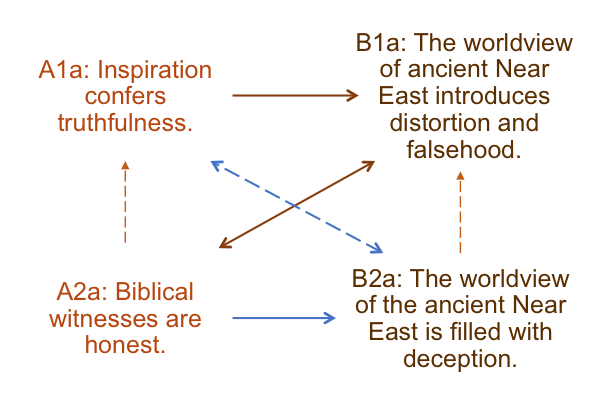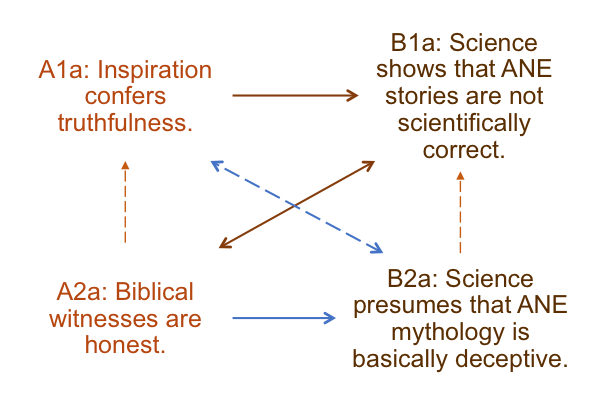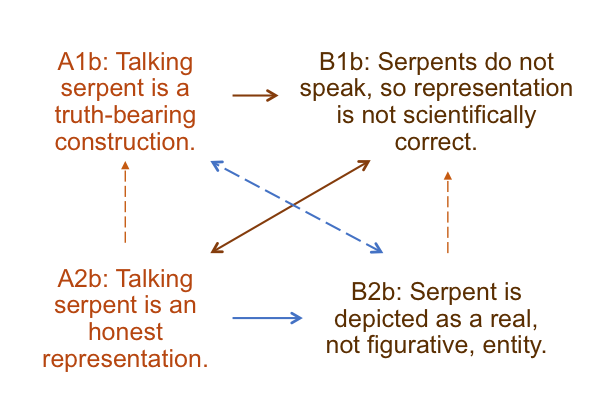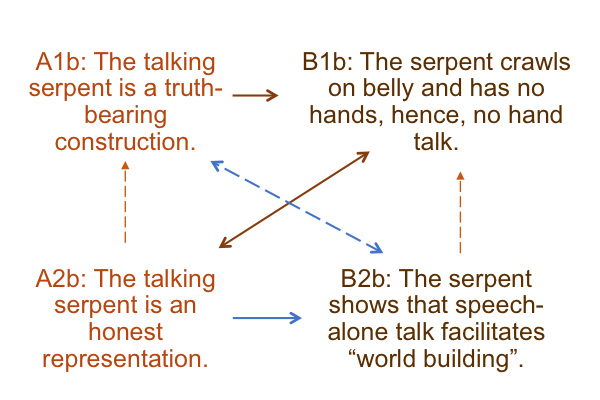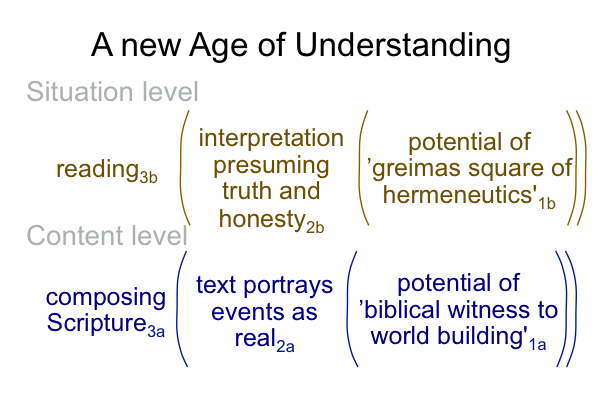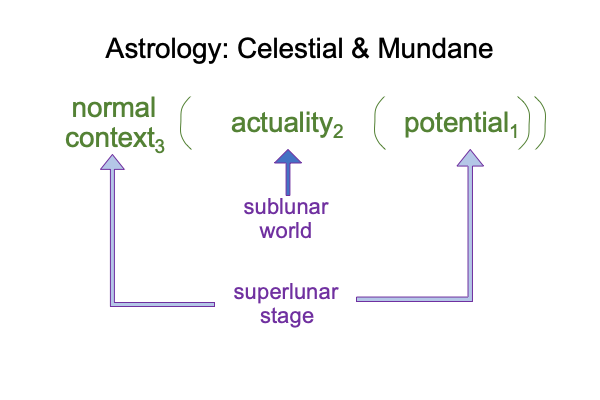Looking at Andrew Kulikovsky’s Overview (2005) “The Bible and Hermeneutics” (Part 2 of 10)
0011 The greimas square concerns four bound elements (A1, A2, B1 and B2) and consists of four sets of statements (C, D, E and F).
Here is a picture.
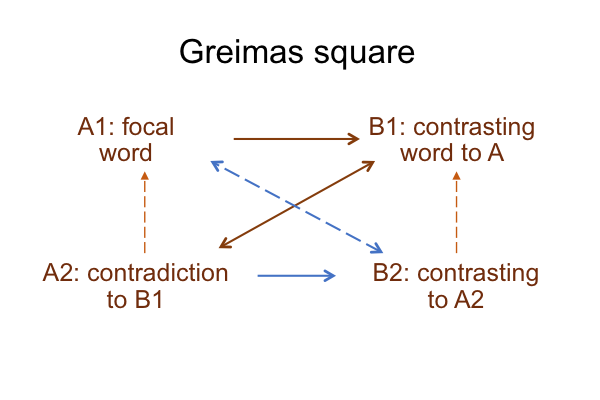
0012 (C) A1 is the spoken word, element, phrase or topic under consideration.
(D) B1 contrasts with A1.
(E) A2 stands against, or “contradicts”, B1. A2 complements A1.
(F) B2 contrasts with A2. B2 stands against A1. B2 complements B1.
0013 The technical term, “contrast”, means, “is different than”, in the same way that a denial is different from an affirmation.
The technical term, “stands against” or “contradicts”, means “is distinct from”, in the same way that true (or correct) is distinct from true (or honest).
0014 If I turn the denials into affirmations that must be denied because they can be carried too far, then Articles IX and XII fit into a greimas square in the following manner.
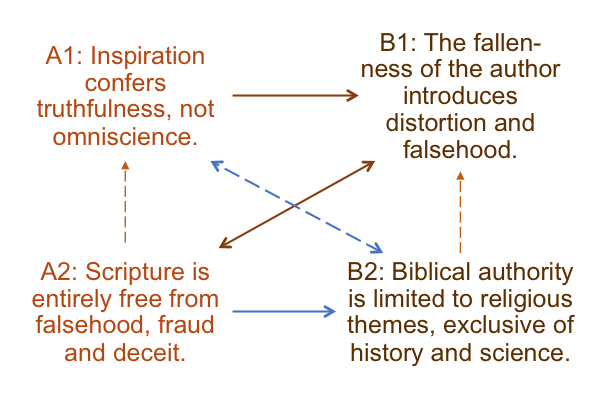
Surely, B1 and B2 carry their affirmations too far, since they do not give priority to the inspired word of God.
In the following discussion, B1 and B2 will be modified into affirmations that do not go so far as to reject their corresponding affirmations, A1 and A2.
0015 I begin the first statement, C.
(C) The focal word is “inspiration” (A1). Inspiration is not omniscience. Inspiration confers truthfulness.
(D) Distortion and falsehood (B1) contrasts with inspiration. This speaks of false, as opposed to true. Somehow, the inspired word of God may be incorrect because the authors are fallen, just like the rest of us. So, even though they may think that they are describing real events, they are not.
Or, maybe the biblical authors have not risen to our modern standards. Scientism-ists would say that these authors have an ancient, incorrect, magical, not scientific, phenomena-based worldview. So, of course, if there is an inspired message, then it is locked in the distortion and falsehood of the worldviews of the ancient Near East.
(E) No, Genesis 1-11 is not deceptive (A2). “Not deceptive” stands against false (B1); in the same way that deceit contradicts incorrect. Honesty (A2) complements inspiration (A1). An inspired author is an honest one.
(F) Well, perhaps the honesty extends only to religious themes. That is to say, the inspired message is hidden in the smoke and mirrors of the worldviews of the ancient Near East (B2). In short, the inspired authors cannot be honest (A2) because the cultures of the ancient Near East are filled with evil and idolatry and deception. Consequently, the stories of Noah’s flood are as true as the flood narrative in the Epic of Gilgamesh. But, Utnapishtim’s flood is a clearly a fictional… er… deceptive account (B2 contradicts A1). Such fiction (B2) complements the incorrectness of the science of the ancient Near East (B1).
0016 In sum, the greimas square offers a relational structure that re-articulates the focal concept of Articles IX and XII, the divine inspiration of Genesis 1-11. The affirmations become more focused. The denials become more nuanced. Fallenness (B1) becomes entangled with the world of the ancient Near East (B1a). Plus, history and science, as moderns (B2) know them, do not exist in this world (B2a). Rather, the worldviews of the ancient Near East are fictions, about things that may be true, but we cannot know about such truth, because all we know is what the texts say.

